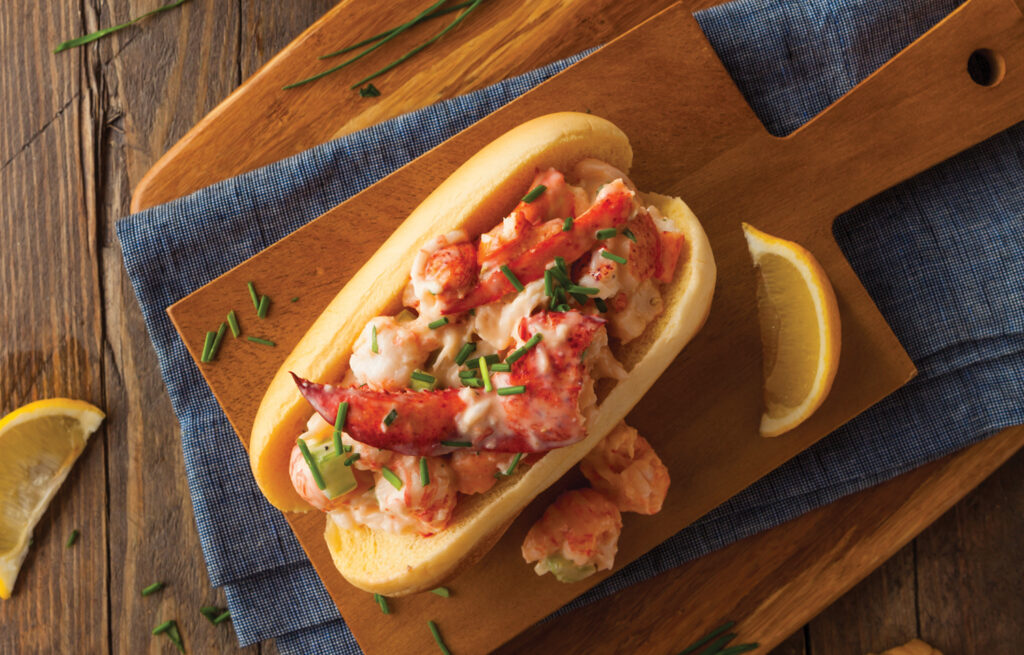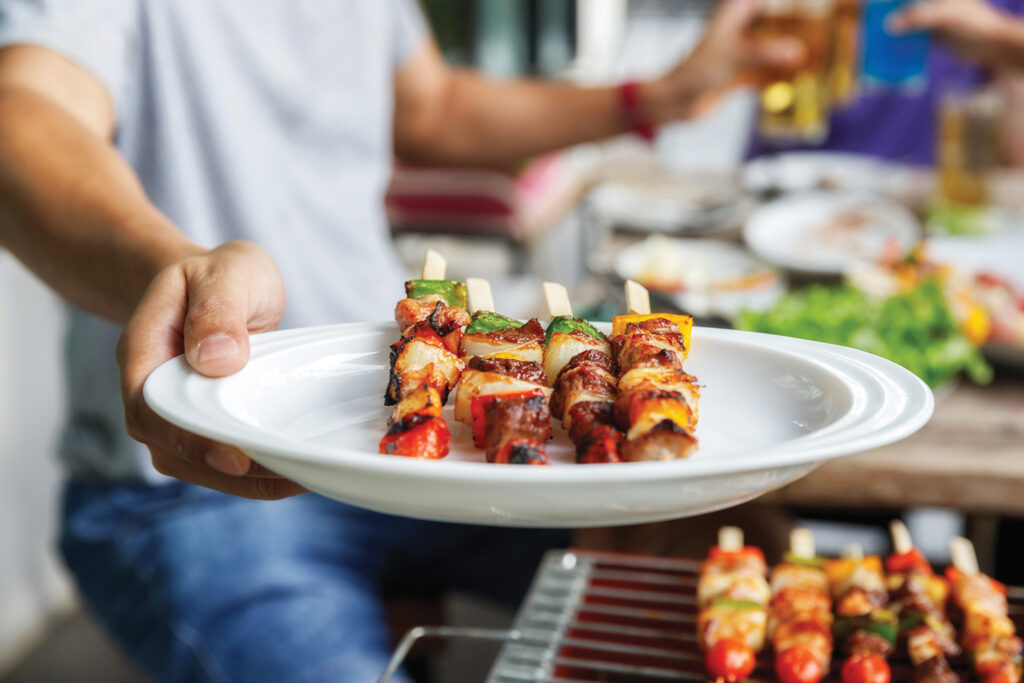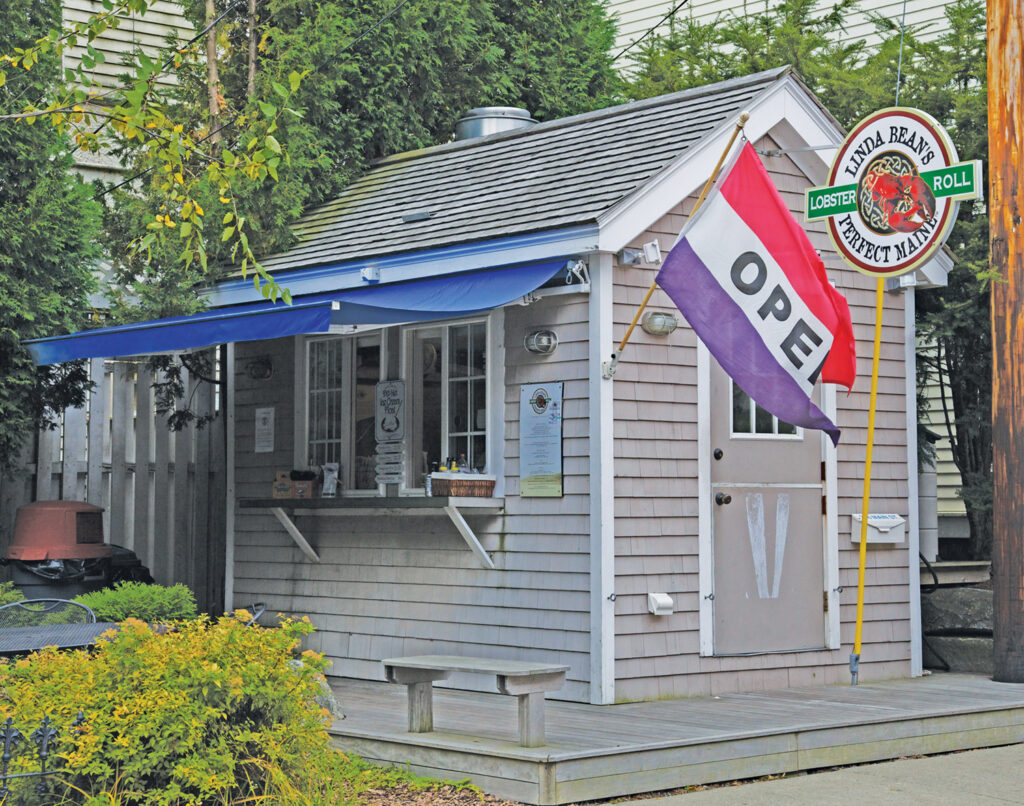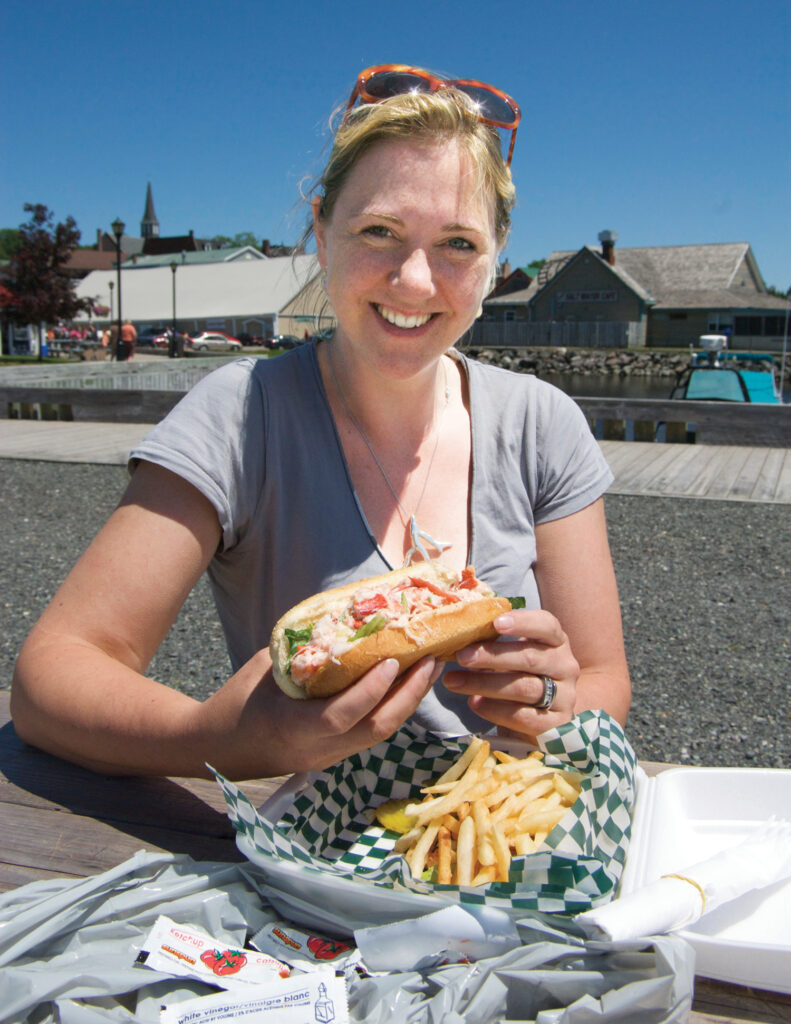Transplanted Delicacies
Lobster rolls and kebabs have traveled from near and far to delight local tastebuds
BY Elyse Kiel

Though they originated in Connecticut in 1929, lobster rolls have made their way across the country, and Southeastern North Carolina has accepted the tasty import with open arms (and mouths).
The New England and Canadian maritime meal consists of buttery lobster meat in a mayonnaise-based sauce in a top-split bun usually topped with chives. What’s not to love? Depending on your preference, you can delight in a lobster roll with hot (Connecticut-style) or cold (Maine-style) meat.
During those roaring ’20s in Connecticut, a man named Harry working in a restaurant called Perry’s used two slices of white bread to create a hot lobster sandwich for a salesman who asked for it to go. The bread source has changed to more durable types such as hoagie rolls to prevent the butter and sauce from sliding out of the sandwich.
The Maine lobster roll became popular during the 1950s, turning lobster meat from a “poor man’s” food into a delicacy.
Tourism boomed and so did the lobster roll. The sandwich was sold at roadside stands and restaurants up and down the Eastern Seaboard. In 1996, New York City chef Rebecca Charles adapted her own style to the Maine lobster roll and served it in her restaurant, Pearl Oyster Bar in Greenwich Village.
Today, the lobster roll is a beloved sandwich enjoyed by many. Hot or cold, it is a prominent American food.

The origin of kebabs is a much farther trip than New England.
People in the Middle East have long satisfied their grumbling stomachs with fire-roasted meats. The word kebab is a literal translation of “to roast” from the Turkish and Persian languages. In ancient times, nomads would use a skewer technique, cutting meat into small pieces and cooking it on a rod to make the most of the energy and heat from fire.
The origin of kebabs traces back to the Ottoman Empire in the ninth century. The Turkish honed the skill of roasting meat over a spit, and it became a symbol of hospitality.
There were two main types of kebabs in Turkish culture, the shish kebab and the doner kebab. The former is marinated cubes of meat that are skewered and grilled with vegetables. The latter is a seasoned chunk of meat on a skewer that is cut off in slices.
The kebab traveled throughout the Middle East, with people from Iran, India, Pakistan, and North Africa each adding their own mix of spices, method of preparing the meat, and how it is presented.
The Greeks added their own twist with souvlaki kebabs and gyros. The former is marinated meat, typically chicken or pork, grilled on a skewer. Gyros are seasoned and marinated meat cooked on a rotisserie over a fire. The gyro is often served with tzatziki sauce, onions, and tomatoes on pita bread.
Whatever method you choose in present-day coastal Carolina, kebabs and lobster rolls are sure to be a favorite with family and friends.
Host a seafood shindig and make lobsters rolls that everyone will talk about. Pair the delicious seafood with Southern favorites like coleslaw, sweet potato fries, or corn on the cob.
Celebrate the onset of fall with some kickin’ kebabs. There is a variety of flavors and styles that will be sure to please any crowd. Place the roasted kebabs over a plate of tender rice or even a tangy Mediterranean salad.
As the laughter and chatter of friends and family sings through the air, know that the history of these two different dishes is carried on with every bite.
Recipes
Lobster Rolls
Ingredients
- Hoagie rolls or hot dog buns
- Lobster tails (2 lobster tails for a generous lobster roll, or one per person for more moderate portions or if they’re really large)
- Mayonnaise
- Dijon mustard
- Chives
- Parsley
- Bib lettuce
- Butter
- Salt and pepper
- Optional: hot sauce
Instructions
Toast and butter rolls, then line with lettuce leaves and set aside. Bring a large pot to boil. Place lobster tails in the water for 5 to 8 minutes until they turn bright red. Remove and set them in an ice bath for 5 minutes, then remove the shells and dice the meat into chunks. Place in a large bowl and mix with mayo, Dijon mustard, chives, and salt and pepper (all to taste).
For a Connecticut-style lobster roll, serve the mixture immediately as hot. For a Maine-style roll, set the mixture in the fridge to cool. Stuff the rolls with a generous helping of the lobster meat mixture and sprinkle finely chopped parsley on top. For an extra kick, add a drizzle of hot sauce.
Middle Eastern Style Kebabs
Ingredients
- 3 lbs of boneless, skinless chicken thighs
- 1 large lemon, juiced and zested
- 5 cloves of garlic, minced
- 1 large red onion
- 1 cup plain whole milk Greek yogurt
- ½ cup olive oil
- 2 tsp paprika
- ½ tsp cumin
- ⅛ tsp cinnamon
- 2 tsp salt
- ½ tsp pepper
- ½ to 1 tsp crushed red pepper flakes
- Optional: Add veggies if desired, such as zucchini, bell peppers, or tomatoes
Instructions
Peel and cut red onion into thick, 1-inch squares. Cut chicken thighs into 1 ½-inch thick pieces. Combine yogurt, olive oil, paprika, cumin, red pepper flakes, lemon juice, lemon zest, garlic, salt, and pepper into a large bowl.
Thread chicken thighs on skewers, layering vegetables between the meat. There should be 6 to 10 skewers worth of meat depending on the amount of added vegetables. Coat the skewers thickly in the marinade. Cover and refrigerate overnight or for at least 8 hours.
Preheat a grill to medium-high. Carefully grease the grill using vegetable oil. Place the kebabs on the grill and turn occasionally. Remove from the grill when the meat is golden brown, about 15 minutes.
Optional: If using bamboo skewers, soak for 30 minutes to prevent charring when grilling.



